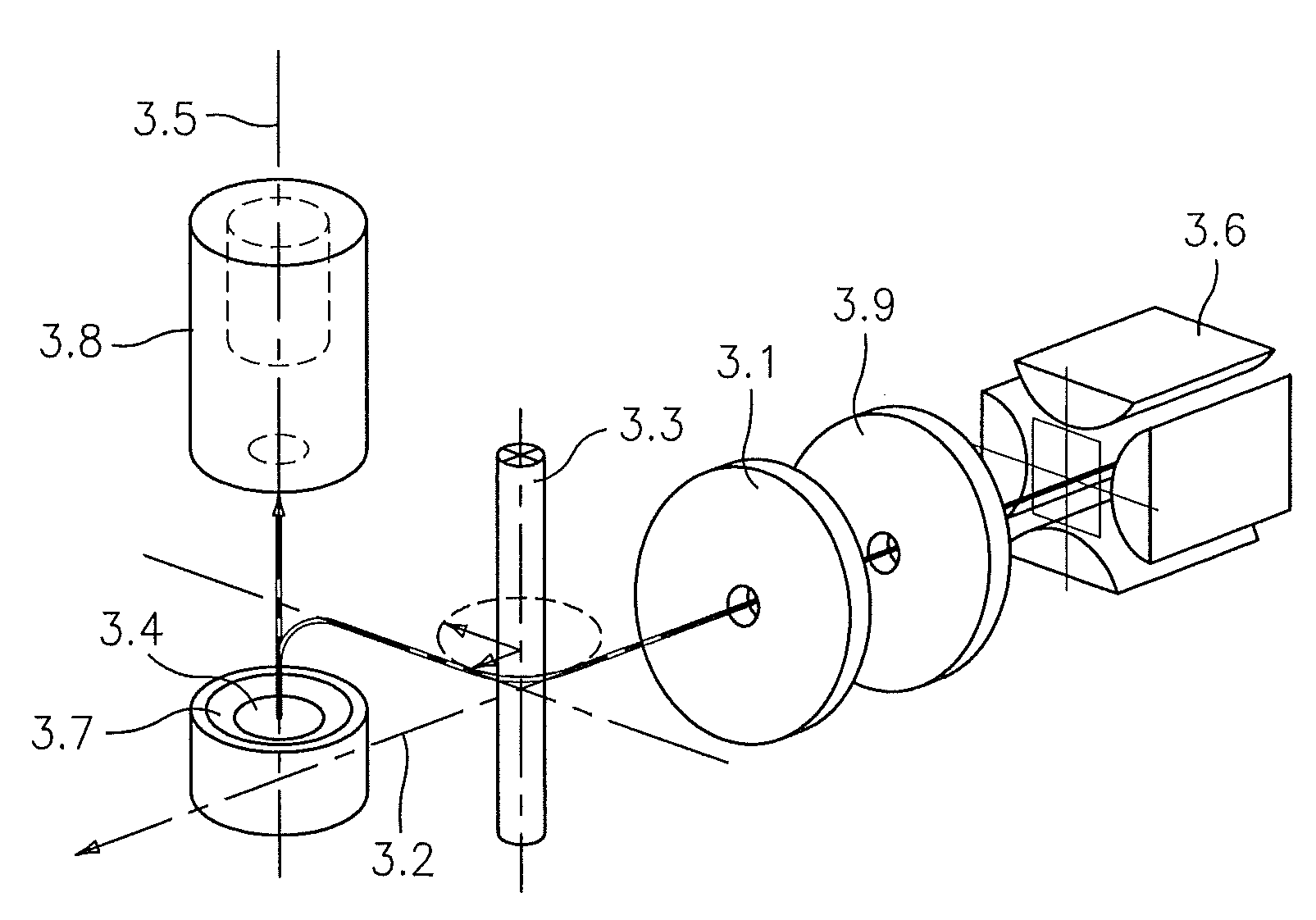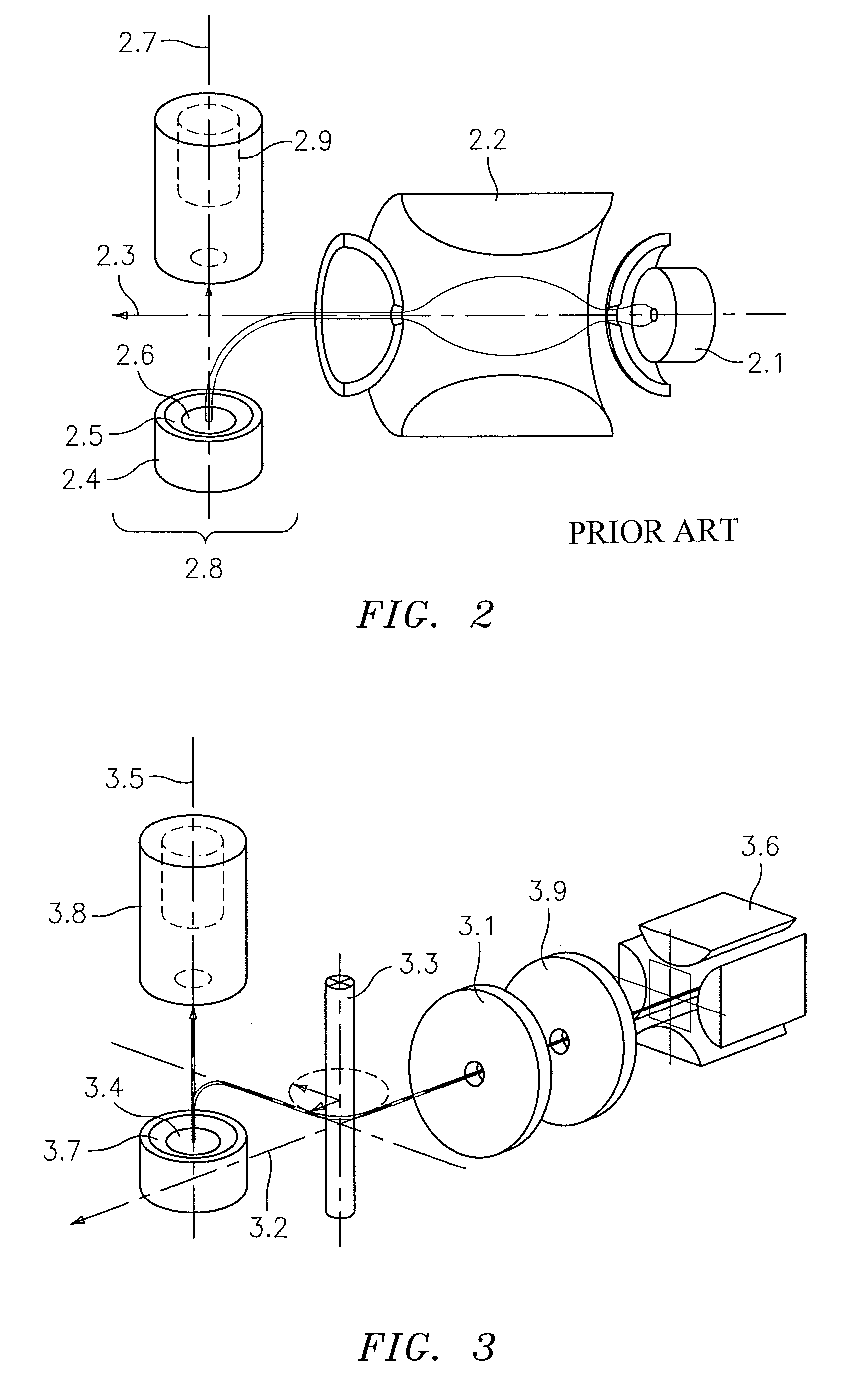Ion detection system with neutral noise suppression
a detection system and neutral noise technology, applied in the direction of instruments, particle separator tube details, separation processes, etc., can solve the problems of reducing the signal-to-noise ratio and thus sensitivity of the ion detector, restricting the ions exiting from the mass analyzer, and reducing the ion collection
- Summary
- Abstract
- Description
- Claims
- Application Information
AI Technical Summary
Benefits of technology
Problems solved by technology
Method used
Image
Examples
Embodiment Construction
[0015]FIG. 3 illustrates an ion optics configuration for suppression of neutral noise. The conversion dynode is positioned such that the conversion dynode axis 3.5 that passes through the center of the ion collision region 3.4 of the conversion dynode and perpendicular to the dynode collision surface 3.7 does not intersect the longitudinal axis 3.2 of the ion exit beam of the quadrupole mass analyzer 3.6. That is, the axis 3.5 collinear to the conversion dynode region 3.4 and the input port of the electron multiplier 3.8 does not intersect the longitudinal axis 3.2 of the ion beam exiting from the mass analyzer 3.6.
[0016]In the embodiment of FIG. 3, the trajectory of ions exiting the mass analyzer 3.6 is bent and projected to the ion collision region of the conversion dynode. To achieve this redirection of the ion beam, a field generator in the form of a conducting bending rod 3.3 is positioned adjacent to the axis 3.2 of the ion beam. The conducting bending rod 3.3 is negatively or...
PUM
 Login to View More
Login to View More Abstract
Description
Claims
Application Information
 Login to View More
Login to View More - R&D
- Intellectual Property
- Life Sciences
- Materials
- Tech Scout
- Unparalleled Data Quality
- Higher Quality Content
- 60% Fewer Hallucinations
Browse by: Latest US Patents, China's latest patents, Technical Efficacy Thesaurus, Application Domain, Technology Topic, Popular Technical Reports.
© 2025 PatSnap. All rights reserved.Legal|Privacy policy|Modern Slavery Act Transparency Statement|Sitemap|About US| Contact US: help@patsnap.com



